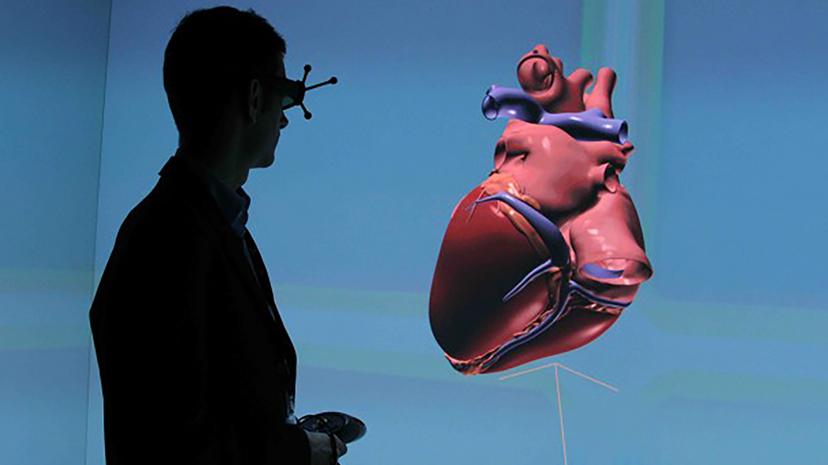In a groundbreaking initiative, Dassault Systemes has harnessed the power of technology to create a 'virtual twin' of the human heart, revolutionizing the way doctors understand and treat patients. This project, known as the Living Heart project, has not only opened new frontiers in medical science but has also showcased the potential of Artificial Intelligence (AI) and machine learning in saving lives.
The Journey to a Virtual Heart: Dassault Systemes, a French company with a rich history in creating virtual models of complex machines, embarked on an extraordinary journey—a ten-year endeavour to build a 'virtual twin' of the human heart. Unlike machines such as automobiles or aircraft, replicating the intricacies of the human heart posed a unique challenge. Dr. Steve Levine, Senior Director of Virtual Human Modeling at Dassault Systemes, highlighted the complexity of the task, emphasizing the lack of a virtual counterpart in the medical field for testing treatments.
A Global Collaboration for Heart Health: The Living Heart project brought together experts, researchers, and doctors from over 150 organizations across 49 countries. This collaborative effort resulted in a 3D 'virtual twin' of the human heart, a physics-based model that mimics the real heart's operations. This model, powered by AI, allows doctors to simulate heart diseases and run intricate simulations, providing valuable insights into potential complications.
Transformative Impact on Healthcare: The 'virtual twin' heart has become a catalyst for transformative changes in healthcare. Beyond simulations, this technological marvel is being utilized by companies like Sahajanand Medicals in India to create personalized stents at a fraction of the cost. Drug companies and medical device manufacturers leverage the virtual heart to gauge the impact of medicines and instruments on the organ.
Real-Life Success Stories: Dr. Levine shared a compelling example of the Boston Children's Hospital utilizing the 3D 'virtual twin' to tackle complex cases successfully (source: The Indian Express). In one instance, a toddler's life was saved by accurately predicting the optimal surgical procedure using the virtual model. Such success stories underscore the potential of this technology to revolutionize medical procedures and decision-making.
Customization for Optimal Results: The 'virtual twin' heart isn't a one-size-fits-all model. AI algorithms enable customization for each patient, ensuring optimal results. This cloud-based platform facilitates global collaboration, allowing doctors worldwide to benefit from shared data and procedures.
Beyond the Heart: The Future of Virtual Twins-Dassault Systemes envisions extending the concept of 'virtual twins' beyond the heart. The company is actively exploring creating virtual counterparts for the human brain and liver. While challenges exist, especially in understanding complex organs like the brain, the potential benefits for pharmaceutical companies in understanding drug impact on the liver are immense.
Challenges and Future Prospects: Dr Levine acknowledges the challenges in modelling organs like the brain, where mysteries still prevail. Despite these hurdles, the company aims to create a 'virtual liver' within a year. While the full functionality may take a decade, the promise of advancements in medical science remains unwavering.
Bridging the Business Challenge: Developing such advanced systems comes with a significant cost. Dassault faces the 'business challenge' of convincing hospitals and insurance companies that this technology can lead to long-term cost reduction in healthcare. Dr. Levine emphasizes the need to prove the cost-saving benefits and points to the positive outcomes observed in Boston.
Dassault Systemes Living Heart project stands as a ray of innovation, showcasing the extraordinary possibilities when technology and healthcare converge. As the 'virtual twin' continues to evolve, its impact on medical research, treatment methodologies, and cost efficiencies holds tremendous promise for the future of global healthcare

 As the 'virtual twin' continues to evolve, its impact on medical research, treatment methodologies, and cost efficiencies holds tremendous promise for the future of global healthcare.
As the 'virtual twin' continues to evolve, its impact on medical research, treatment methodologies, and cost efficiencies holds tremendous promise for the future of global healthcare.










.jpeg)











.jpg)








